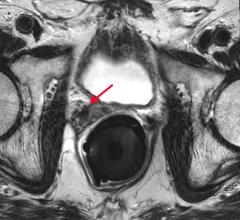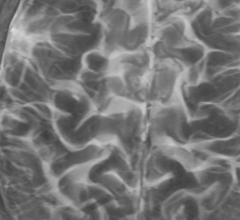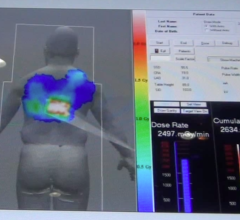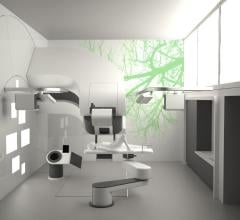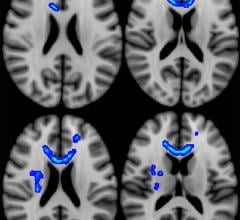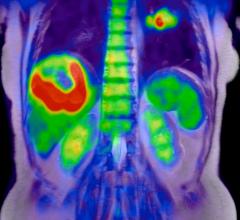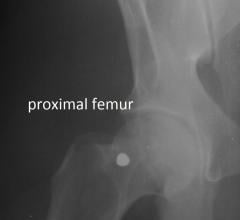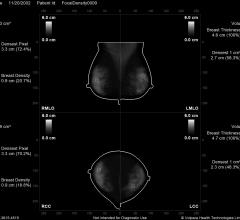March 31, 2016 — Medical diagnostic imaging provider Digirad Corp. posted an article to their website discussing updates ...
New technology has enabled doctors to administer higher doses of radiation to prostate cancer patients with fewer side effects. However, a new study shows that escalating the dose may not actually help a patient in the long term, at least not patients with localized prostate cancer.
New research suggests that looking at structures in the right side of the brain may help predict who will better recover from language problems after a stroke.
Radiology departments have many different needs and face a wide variety of challenges that can impact their departments ...
A new University of Alberta study shows that vibrating the spine may reveal more than magnetic resonance imaging (MRI) when it comes to treating back pain.
A prospective study examining a trimodality treatment approach in localized bladder cancer cases using adaptive image-guided, intensity-modulated radiation therapy (IG-IMRT) found the bladder preservation rate at three years was 83 percent.
March 30, 2016 — The U.S. Food and Drug Administration (FDA) revoked the Mammography Quality Standards Act (MQSA) ...
Despite decades of progress in breast imaging, one challenge continues to test even the most skilled radiologists ...
MicroRNA molecules were discovered only relatively recently in humans, but have been shown to play a pivotal role in how a cell responds to injury or stress, such as radiation therapy. A University of California Los Angeles (UCLA)-led study has for the first time shown that microRNAs, specifically the microRNA known as miR-34, can sit silently in an inactive state in a cell waiting for a signal to turn it on.
March 30, 2016 — IBA (Ion Beam Applications SA) announced it has signed a contract with the University Hospitals Leuven ...
March 30, 2016 — Diffusion tensor imaging (DTI), a type of magnetic resonance imaging (MRI), may be able to predict ...
Bayer Radiology’s Barbara Ruhland and Thom Kinst discuss how radiology departments can address the many different ...
March 30, 2016 — Philips Healthcare introduced the first commercially available magnetic resonance (MR)-only simulation ...
Choosing ongoing monitoring instead of immediate curative treatment (surgery or radiotherapy) leads to a better overall quality of life for men with low-risk prostate cancer.
A promising new discovery by University of California Los Angeles (UCLA) scientists could lead to a new method of identifying cancer patients that express high levels of an enzyme and are more likely to respond to cancer treatments.
eHealth Saskatchewan plays a vital role in providing IT services to patients, health care providers, and partners such ...
Forensic researchers have for the first time established science-based standards for identifying human remains based on X-rays of an individual's spine, upper leg or the side of the skull.
IBA (Ion Beam Applications S.A.) announced the sale of IBA Molecular (IBAM) in which IBA had a 40 percent stake, to funds advised by CapVest Partners LP (“CapVest”), has closed successfully.
The Centers for Medicare & Medicaid Services Office of Minority Health (CMS OMH) released a new interactive map to increase understanding of geographic disparities in chronic disease among Medicare beneficiaries.
Civco Medical Solutions announced that it has acquired PCI Medical, a market leader in high-level disinfection products for ultrasound transducers. The acquisition equips Civco with a portfolio of hardware and consumables for cost-effective infection control compliance in the ultrasound transducer reprocessing market.
Routine mammography, widely recommended for breast cancer screening, may also be a useful tool to identify women at risk for heart disease, according to a study scheduled for presentation at the American College of Cardiology's (ACC) 65th Annual Scientific Session.
March 28, 2016 — Magnetic resonance imaging (MRI) of the cervix is more accurate than ultrasound at predicting if some ...
Based on its recent analysis of the breast density assessment solutions market, Frost & Sullivan recognizes Volpara Solutions with the 2016 Global Frost & Sullivan Award for Competitive Strategy Innovation and Leadership.
Duke University researchers have taken a major step towards realizing a new form of magnetic resonance imaging (MRI) that could record biochemical reactions in the body as they happen.

 March 31, 2016
March 31, 2016 
